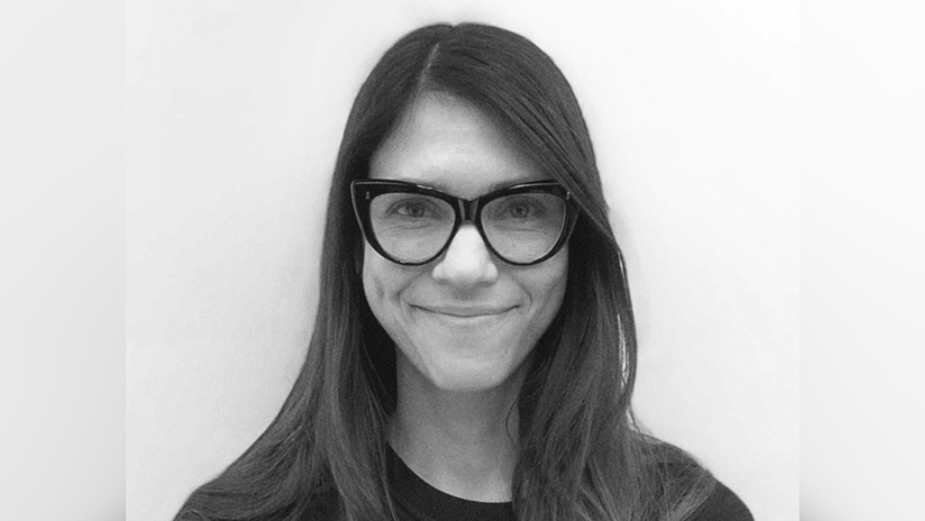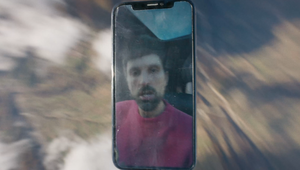
Making the Grade: Being Efficient, Reliable and Kind with Natalia Jaeger

With a background in fine arts, Natalia Jaeger started her career in post production as an assistant at Film Shed. Her natural eye for colour, informed by her photography practise, immediately drew her towards colour grading. After working on a variety of projects – including music videos, documentaries and short films – Natalia joined Studio RM last year. At Studio RM, she has worked on Tom Johnson’s Kenzo Winter campaign and Stuart and Lev’s Palace Skateboards collaboration with Harrods. Her most recent work was on BBC short Hung out to Dry, where her colour grading helped capture the film’s British suburban grit. Natalia has a versatile approach to colour grading, which has been significantly influenced by her own artistic sensibility.
LBB> What was your first experience with the world of colour grading – and when did you decide that being a colourist was a role that you wanted to pursue?
Natalia> My background is in photography but I have always had an affinity for cinema. A few years after moving to London, I started thinking about getting into filmmaking but was a bit clueless about how to go about it. I first heard about colour grading through a few conversations I had with DoPs and it sounded so fascinating. In many ways, it resounded with my photography practice, which is primarily driven and informed by colour. After investigating more and by reaching out to more people in the industry, I decided to pursue this path.
LBB> What was the project that you felt really changed your career?
Natalia> Grading Emma Charles and Ben Evan James' documentary “On A Clear Day You Can See the Revolution From Here” was a particularly special experience which cemented my appreciation for this craft. This was the first project where I felt the extent in which colour grading can be a truly creative and collaborative process. Also, their film was beautifully shot in 16mm so it was a true pleasure to grade.
LBB> How/where did you hone your craft and did you have any particular mentors?
Natalia> I learned as much as I could on my own at first; Davinci Resolve is free and the internet is a wealth of knowledge so I made the most out of that. Early on I also had the opportunity to shadow Filipe Fernandes, a fantastic freelance colourist who taught me a lot about both colour grading and the post-production industry in general. There are always new things to learn and new skills to master, so it has been extremely valuable to be working alongside our senior colourist Jamie Noble here at Studio RM.
LBB> Tell us more about your creative process - (e.g.when you get a project, how do you go about developing a look?)
Natalia> It depends on the project, but almost always it all starts with a conversation with the director and DoP where I try to get as much information about their creative intent as possible. Visual references (either from films, photographs or artworks) are also helpful in getting an insight into the client’s vision. Technically speaking, I usually start with a first pass, which mainly involves correcting any obvious discrepancies, before moving into establishing the look of the piece with the client.
LBB> From experience, we’ve found that colourists often love art and photography - when you’re out of the studio, what inspires you?
Natalia> I continue to maintain my art photography practice and find that it informs a lot of my work as a colourist and vice versa. In particular, the use of colour within my street photography derives from an intuitive connection in how different shades and hues interact with our daily lives. In a broader sense, being creative outside the studio has helped me to relate to the artists and filmmakers we work with on a daily basis, while also understanding the visual artistic process as a whole.
LBB> Colour grading is largely a digital affair, but there’s also been a resurgence of film over the past few years in commercials and music videos. What are your thoughts about working on film versus digital formats like 4K? And what are your favourite techniques for capturing a vintage or tactile feel?
Natalia> As a colourist, I enjoy working with both formats, but the photographer within me gets really excited when I get a project that was shot in film. However, digital footage can be manipulated and experimented with extensively and it is not difficult nowadays to use LUTs and grain to successfully emulate the look and feel of film stock. On the technical side, there isn’t a “one way fits all” approach and each project’s brief will dictate the exact process.
LBB> When working in commercials, what role can colour and a grade play in enhancing a brand’s assets and what sort of conversations do you have with creatives and clients about that (e.g. is there often a strategic/consistent ‘look’ for a brand? Can these be too heavy handed?)
Natalia> Most of the time, grades for commercials have to achieve two core things. The first is for the product to stand out i.e. brand recognition. Clients will normally have a very defined idea about how the product itself should always be presented within the work – that its colour palette always comes through regardless of what else might be happening on the screen.
The second is to ensure the creative look of any project remains consistent with the overall campaign. As Studio RM works across both still and motion image, we are often in a position to have a wider scope on the campaigns we work on. We have an amazing team of retouchers and being able to see their process has been very insightful. It helps me feel part of the whole process of a campaign; the retouchers bring the still image to life, with us in the motion department then using those same images as a reference point when grading the video assets.
LBB> How do you ensure that each colourist-director partnership is a success?
Natalia> I believe a lot of it relies on being an active and patient listener. Beyond the technical aspects of the craft, colourists must be able to grasp what the director intends to transmit with the project early on in the collaboration.
LBB> What advice would you give to budding colourist?
Natalia> Reach out to young and up-and-coming directors and cinematographers and start building a strong working relationship with them. Being efficient, reliable and kind will help nurture loyalty amongst your client base and ensure they will always want to work with you again in the future.
LBB> In your opinion, what’s difference between a good grade and a great grade?
Natalia> Overall, I believe a great grade is one which adheres to the concept of a project without drawing attention to itself.
LBB> How is the craft and trade of colour grading changing?
Natalia> Colour grading is expanding as rapidly as the technology we use to grade. I have definitely noticed a marked increase in the number of colourists not just here in the U.K. but across the world. And as the technology gets better every year, so too does our capacity as colourists to achieve even more with a grade.













